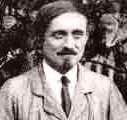├ēmile Armand
| |||||||||||||||||||||||||||||||||||||||||||||||||||||||
Read other articles:

American author (b. 1956) For other people named Michael Connelly, see Michael Connelly (disambiguation). Michael ConnellyConnelly at the detective fiction convention Bouchercon XLI in San Francisco, October 2010Born (1956-07-21) July 21, 1956 (age 67)Philadelphia, Pennsylvania, U.S.OccupationNovelistEducationSt. Thomas Aquinas High SchoolAlma materUniversity of FloridaGenreCrime fiction, thrillerSpouse Linda McCaleb (m. 1984)Children1Websitemichaelconnel…

BasisTechCompany typePrivateIndustryInformation technology Information access Digital forensics TransliterationFounded1995HeadquartersSomerville, Massachusetts, United StatesArea servedAmericas Europe AsiaKey peopleCarl Hoffman (CEO, Co-Founder) Steven Cohen (EVP/COO, Co-Founder) Brian Carrier (CTO and GM Cyber Forensics) Simson Garfinkel (Chief Scientist) Junichi Hasegawa (VP Asia)ProductsKonaSearch Cyber Triage Autopsy Sleuth KitSubsidiariesBasisTech GKWebsitehttp://www.basistech.com http://ww…

Cet article est une ├®bauche concernant un coureur cycliste espagnol. Vous pouvez partager vos connaissances en lŌĆÖam├®liorant (comment ?). Pour plus dŌĆÖinformations, voyez le projet cyclisme. Tamames Iglesias est un nom espagnol. Le premier nom de famille, paternel, est Tamames ; le second, maternel, souvent omis, est Iglesias. Agust├Łn TamamesInformationsNom de naissance Agust├Łn Tamames IglesiasNaissance 19 octobre 1944 (79 ans)Monterrubio de Armu├▒aNationalit├® espagnole├ēqu…

Questa voce o sezione sull'argomento storia degli Stati Uniti d'America non cita le fonti necessarie o quelle presenti sono insufficienti. Puoi migliorare questa voce aggiungendo citazioni da fonti attendibili secondo le linee guida sull'uso delle fonti. Marcia di Sherman verso il mareparte della Guerra di secessione americanaUn'incisione che riproduce la marcia di Sherman verso il mareData15 novembre-21 dicembre 1864 LuogoGeorgia, Stati Confederati d'America EsitoVittoria dell'Unione Schie…

Yemenite Jewish tradition of orthography in a Torah scroll Yemenite Torah scrolls Yemenite scrolls of the Law containing the Five Books of Moses (the Torah) represent one of three authoritative scribal traditions for the transmission of the Torah, the other two being the Ashkenazi and Sephardic traditions that slightly differ.[1] While all three traditions purport to follow the Masoretic traditions of Aaron ben Moses ben Asher, slight differences between the three major traditions have d…

µŁżµØĪńø«Õ║ÅĶ©Ćń½ĀĶŖéµ▓Īµ£ēÕģģÕłåµĆ╗ń╗ōÕģ©µ¢ćÕåģÕ«╣Ķ”üńé╣ŃĆé (2019Õ╣┤3µ£ł21µŚź)Ķ»ĘĶĆāĶÖæµē®ÕģģÕ║ÅĶ©Ć’╝īµĖģµÖ░µ”éĶ┐░µØĪńø«µēƵ£ēķćŹķ╗×ŃĆéĶ»ĘÕ£©µØĪńø«ńÜäĶ«©Ķ«║ķĪĄĶ«©Ķ«║µŁżķŚ«ķóśŃĆé ÕōłĶÉ©Õģŗµ¢»ÕØ”ńĖĮńĄ▒ÕōłĶ¢®ÕģŗńĖĮńĄ▒µŚŚńÅŠõ╗╗ęÜą░čüčŗą╝-ą¢ąŠą╝ą░čĆčé ąÜąĄą╝ąĄą╗ę▒ą╗čŗ ąóąŠęøą░ąĄą▓ÕŹĪńæ¤Õ¦åĶŗźķ®¼Õ░öńē╣┬ʵēśÕŹĪĶĆČÕż½Ķć¬2019Õ╣┤3µ£ł20µŚźÕ£©õ╗╗õ╗╗µ£¤7Õ╣┤ķ”¢õ╗╗ÕŖ¬Õ░öĶŗÅõĖ╣┬Ęń║│µēÄÕ░öÕĘ┤ĶĆČÕż½Ķ«Šń½ŗ1990Õ╣┤4µ£ł24µŚź’╝łÕōłĶ¢®ÕģŗĶśćńČŁÕ¤āńżŠµ£āõĖ╗ńŠ®Õģ▒ÕÆīÕ£ŗńĖĮńĄ▒’╝ē ÕōłĶÉ©Õģŗµ¢»ÕØ” ÕōłĶÉ©Õģŗµ¢»ÕØ”µö┐Õ║£Ķłćµ…

Mandar-laut hitam Cepphus grylle Black guillemot resting on a cliff in Reykjanes, IcelandStatus konservasiRisiko rendahIUCN22694861 TaksonomiKerajaanAnimaliaFilumChordataKelasAvesOrdoCharadriiformesFamiliAlcidaeGenusCepphusSpesiesCepphus grylle Linnaeus, 1758 Tata namaSinonim takson Alca grylle Linnaeus, 1758 Colymbus grylle Linnaeus, 1766 Distribusi lbs Cepphus grylle atau umum dikenal sebagai mandar-laut hitam dalah burung laut berukuran sedang dari keluarga alsida, Alsidae, ini adal…

Exterior of an inpatient hospice unit In the United States, hospice care is a type and philosophy of end-of-life care which focuses on the palliation of a terminally ill patient's symptoms. These symptoms can be physical, emotional, spiritual or social in nature. The concept of hospice as a place to treat the incurably ill has been evolving since the 11th century. Hospice care was introduced to the United States in the 1970s in response to the work of Cicely Saunders in the United Kingdom. This …

Month of 1968 1968 January February March April May June July August September October November December << August 1968 >> Su Mo Tu We Th Fr Sa 01 02 03 04 05 06 07 08 09 10 11 12 13 14 15 16 17 18 19 20 21 22 23 24 25 26 27 28 29 30 31 August 20ŌĆō21, 1968: Soviet Union and 750,000 Warsaw Pact troops invade Czechoslovakia The following events occurred in August 1968: August 1, 1968 (Thursday) The National Football League made its first test of the pressure point, allowing the kickin…

┘ćž░┘ć ž¦┘ä┘ģ┘鞦┘äž® ž╣┘å ž¦ž¬ž¼ž¦┘ć ž¦┘äž┤ž▒┘é. ┘ä┘ģž╣ž¦┘å┘Ź žŻž«ž▒┘ēžī žĘž¦┘äž╣ ž┤ž▒┘é (ž¬┘łžČ┘ŖžŁ). ž┤ž▒┘é┘ģž╣┘ä┘ł┘ģž¦ž¬ ž╣ž¦┘ģž®ž¼ž▓žĪ ┘ģ┘å ž¦ž¬ž¼ž¦┘ć ž│┘ģž¦┘ł┘Ŗž¦ž¬ž¼ž¦┘枦ž¬ ž¦┘äž©┘łžĄ┘äž® ž▓ž¦┘ł┘Ŗž® ž¦┘ä┘ģ┘łžČž╣ 90 ž»ž▒ž¼ž® ž¦┘ä┘å┘é┘ŖžČ ž║ž▒ž©ž┤┘ģž¦┘äž¼┘å┘łž© ž¬ž╣ž»┘Ŗ┘ä - ž¬ž╣ž»┘Ŗ┘ä ┘ģžĄž»ž▒┘Ŗ - ž¬ž╣ž»┘Ŗ┘ä ┘ł┘Ŗ┘ā┘Ŗ ž©┘Ŗž¦┘垦ž¬ ž¦┘䞦ž¬ž¼ž¦┘枦ž¬ ž¦┘䞯žĄ┘ä┘Ŗž® ž¦┘äž┤┘ģž¦┘ä ž¦┘äž┤ž▒┘é┘Ŗ ž¦┘äž┤┘ģž¦┘ä ž¦┘äž┤┘ģž¦┘ä ž¦┘äž║ž▒ž©┘Ŗ ž¦┘äž┤ž▒┘é ž¦┘äž║ž▒ž© ž¦┘äž¼┘å┘łž© ž¦┘äž┤ž▒┘é┘Ŗ ž¦┘…

ž¼┘ł┘垦ž½ž¦┘å ┘枦┘Ŗž»ž¬ (ž©ž¦┘äžź┘åž¼┘ä┘Ŗž▓┘Ŗž®: Jonathan David Haidt)ŌĆÅ ┘ģž╣┘ä┘ł┘ģž¦ž¬ ž┤ž«žĄ┘Ŗž® ž¦┘ä┘ģ┘Ŗ┘䞦ž» 19 žŻ┘āž¬┘łž©ž▒ 1963 (61 ž│┘åž®) ┘å┘Ŗ┘ł┘Ŗ┘łž▒┘ā ž¦┘äžź┘鞦┘ģž® ┘å┘Ŗ┘ł┘Ŗ┘łž▒┘ā ┘ģ┘łž¦žĘ┘åž® ž¦┘ä┘ł┘䞦┘Ŗž¦ž¬ ž¦┘ä┘ģž¬žŁž»ž® ž╣žČ┘ł ┘ü┘Ŗ ž¦┘䞯┘āž¦ž»┘Ŗ┘ģ┘Ŗž® ž¦┘䞯┘ģž▒┘Ŗ┘ā┘Ŗž® ┘ä┘ä┘ü┘å┘ł┘å ┘łž¦┘äž╣┘ä┘ł┘ģ ž¦┘䞣┘Ŗž¦ž® ž¦┘äž╣┘ģ┘ä┘Ŗž® ž¦┘ä┘ģž»ž▒ž│ž® ž¦┘䞯┘ģ ž¼ž¦┘ģž╣ž® ┘Ŗ┘Ŗ┘ä (ž¦┘䞬ž«žĄžĄ:┘ü┘äž│┘üž®) (ž¦┘äž┤┘枦ž»ž®:ž©┘āž¦┘ä┘łž▒┘Ŗ┘łž│ ┘ü┘Ŗ ž…

Award category Filmfare Award for Best Playback Singer MaleAwarded forBest Performance by a Playback Singer MaleCountryIndiaPresented byFilmfareFirst awardedMukesh,Sab Kuch Seekha HumneAnari (1960)Currently held byBhupinder Babbal,Arjan VaillyAnimal (2024)WebsiteFilmfare Awards The Filmfare Best Male Playback Singer Award is given by Indian film magazine Filmfare as a part of its annual Filmfare Awards for Hindi films, to recognise a male playback singer who has delivered an outstanding performa…

Rue Sainte-Anne Rue Sainte-Anne adalah sebuah jalan di arondisemen 1 dan 2 Paris, Prancis. Rue Sainte-Anne menerima nama ini untuk menghormati Ana dari Austria, Ratu Prancis dan istri Louis XIII[1]. Ini bukan pertama kalinya sebuah jalan memiliki nama ini di Paris.[2] Catatan ^ Promenades dans toutes les rues de Paris ^ Rue Sainte-Anne (Paris) Nouvelle-France (chauss├®e de la) Pranala luar Cari tahu mengenai Rue Sainte-Anne pada proyek-proyek Wikimedia lainnya: Definisi dan terje…

L'oiseau et l'enfantBerkas:Marie Myriam - L'oiseau et l'enfant.jpgPerwakilan Kontes Lagu Eurovision 1977NegaraPrancisArtisMiriam LopesSebagaiMarie MyriamBahasaPrancisKomposerJean-Paul CaraPenulis lirikJoe GracyKonduktorRaymond DonnezHasil FinalHasil final1Poin di final136Kronologi partisipasiŌŚä Un, deux, trois (1976) Il y aura toujours des violons (1978) Ō¢║ L'oiseau et l'enfant (Burung dan Bocah) adalah lagu pemenang dalam Kontes Lagu Eurovision 1977 yang dipentaskan dalam bahasa P…

ž¦┘ä┘ģ┘ä┘āž® ž┤┘ł┘Ŗ┘āž¦ž▒ ┘ģž╣┘ä┘ł┘ģž¦ž¬ ž┤ž«žĄ┘Ŗž® ž¦┘ä┘ģ┘Ŗ┘䞦ž» 25 žŻ┘āž¬┘łž©ž▒ 1876(1876-10-25)žŻž│┘ā┘łž»ž¦ž▒ ž¦┘ä┘ł┘üž¦ž® 17 ┘üž©ž▒ž¦┘Ŗž▒ 1947 (70 ž│┘åž®)ž¦┘ä┘鞦┘ćž▒ž® ┘ģ┘āž¦┘å ž¦┘äž»┘ü┘å ž¦┘ä┘éž▒ž¦┘üž® ž¦┘äž▓┘łž¼ ┘üžżž¦ž» ž¦┘䞯┘ł┘ä ž¦┘䞯┘ł┘䞦ž» žźž│┘ģž¦ž╣┘Ŗ┘ä ž©┘å ┘üžżž¦ž» ž¦┘䞯┘ł┘䞦┘䞯┘ģ┘Ŗž▒ž® ┘ü┘ł┘é┘Ŗž® ž©┘垬 ┘üžżž¦ž» ž¦┘䞯┘ł┘ä ž╣ž¦ž”┘äž® ž¦┘䞯ž│ž▒ž® ž¦┘äž╣┘ä┘ł┘Ŗž® ž¬ž╣ž»┘Ŗ┘ä ┘ģžĄž»ž▒┘Ŗ - ž¬ž╣ž»┘Ŗ┘ä ž¦┘䞯┘ģ┘Ŗž▒ž® ž┤┘ł┘Ŗ┘āž¦ž▒ (1868 - 17 ┘üž…

ąÆąŠčüčģąŠąČą┤ąĄąĮąĖąĄ ąĮą░ ą£ąŠąĮąČčāąĖą║ą║ą░čé. Escalada a Montju├»c ąśąĮč乊čĆą╝ą░čåąĖčÅ ąŠ ą│ąŠąĮą║ąĄ ąöąĖčüčåąĖą┐ą╗ąĖąĮą░ čłąŠčüčüąĄą╣ąĮčŗą╣ ą▓ąĄą╗ąŠčüą┐ąŠčĆčé ą×čüąĮąŠą▓ą░ąĮą░ 1965 ą│ąŠą┤ ąŻą┐čĆą░ąĘą┤ąĮąĄąĮą░ 2007 ą│ąŠą┤ ąōąŠąĮąŠą║ 44 ą£ąĄčüč鹊 ą┐čĆąŠą▓ąĄą┤ąĄąĮąĖčÅ ąśčüą┐ą░ąĮąĖčÅ, ąæą░čĆčüąĄą╗ąŠąĮą░ ąóąĖą┐ ąŠą┤ąĮąŠą┤ąĮąĄą▓ąĮą░čÅ ą║čĆąĖč鹥čĆąĖčāą╝ + čĆą░ąĘą┤ąĄą╗ą║ą░ ąĪąŠčĆąĄą▓ąĮąŠą▓ą░ąĮąĖąĄ UCI Europe Tour (1.2) ąÆčĆąĄą╝čÅ ą┐čĆąŠą▓ąĄą┤ąĄąĮąĖčÅ čüąĄčĆąĄą┤ąĖąĮą░ ąŠą║čéčÅą▒čĆčÅ ą×čĆą│ą░ąĮąĖą…

Railway station in Gyokut┼Ź, Kumamoto Prefecture, Japan Konoha Stationµ£©Ķæēķ¦ģKonoha Station in 2008General informationLocationJapanCoordinates32┬░55ŌĆ▓00ŌĆ│N 130┬░37ŌĆ▓35ŌĆ│E / 32.9167┬░N 130.6265┬░E / 32.9167; 130.6265Operated by JR KyushuLine(s)Ō¢Ā Kagoshima Main Line,Distance176.7 km from Mojik┼ŹPlatforms1 side + 1 island platformsTracks3 + 1 sidingConstructionAccessibleNo - island platform accessed by footbridgeOther informationStatusKan'i itaku agent on siteWebsite…

Wikispecies mempunyai informasi mengenai Tutup beling. Tutup Beling Mallotus mollissimus Calik angin, Mallotus mollissimus dari G. Cibodas, Ciampea, BogorStatus konservasiRisiko rendahIUCN135894748 TaksonomiSuperkerajaanEukaryotaKerajaanPlantaeDivisiTracheophytaOrdoMalpighialesFamiliEuphorbiaceaeTribusAcalypheaeGenusMallotusSpesiesMallotus mollissimus Airy Shaw, 1972 Tata namaBasionimCroton mollissimus (en) Sinonim takson Croton mollissimus Geiseler[1]:73 (basionym) Croton ricinoides Per…

One of two offspring produced by the same pregnancy For other uses, see Twin (disambiguation) and Twins (disambiguation). Identical twins Mark and Scott Kelly, both former NASA astronauts Twins are two offspring produced by the same pregnancy.[1] Twins can be either monozygotic ('identical'), meaning that they develop from one zygote, which splits and forms two embryos, or dizygotic ('non-identical' or 'fraternal'), meaning that each twin develops from a separate egg and each egg is fert…

┘ä┘ģž╣ž¦┘å┘Ź žŻž«ž▒┘ēžī žĘž¦┘äž╣ ┘üž▒ž¦ž▒ž® (ž¬┘łžČ┘ŖžŁ). ┘üž▒ž¦ž▒ž® ž╣┘ä┘ģ ž┤ž╣ž¦ž▒ ž¦┘䞦ž│┘ģ ž¦┘äž▒ž│┘ģ┘Ŗ (ž©ž¦┘äžź┘ŖžĘž¦┘ä┘Ŗž®: Ferrara)ŌĆÅ ž¦┘äžźžŁž»ž¦ž½┘Ŗž¦ž¬ 44┬░50ŌĆ▓07ŌĆ│N 11┬░37ŌĆ▓12ŌĆ│E / 44.835297┬░N 11.619865┬░E / 44.835297; 11.619865 [1] ž¬┘éž│┘Ŗ┘ģ žźž»ž¦ž▒┘Ŗ ž¦┘äž©┘äž» žź┘ŖžĘž¦┘ä┘Ŗž¦ (20 ž│ž©ž¬┘ģž©ž▒ 1870ŌĆō)[2][3] ž¦┘䞬┘éž│┘Ŗ┘ģ ž¦┘䞯ž╣┘ä┘ē ┘ģ┘鞦žĘž╣ž® ┘üž▒ž¦ž▒ž® (1859Ō…


